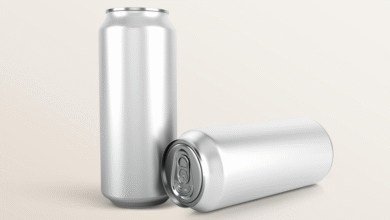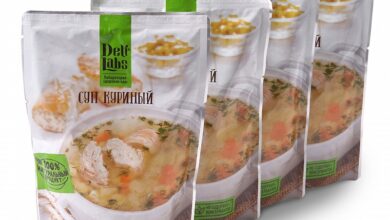Foods That Commonly Spark Acid Reflux Episodes

Acid reflux, often described as a burning sensation rising from the stomach toward the throat, is a condition that affects millions of people worldwide. It happens when stomach acid flows back into the esophagus, irritating its lining and causing discomfort.
Although occasional episodes may not be alarming, persistent reflux can interfere with daily life, leading to restless nights, disrupted meals, and overall reduced well-being. A critical factor in managing this condition involves understanding the foods that tend to trigger it. By identifying and reducing or avoiding these items, individuals can take meaningful steps toward reducing flare-ups and improving digestive comfort.
Understanding the Early Recognition of Reflux
Before diving into specific foods that often worsen reflux, it’s important to understand how people recognize the condition in the first place. Identifying symptoms early makes it easier to adjust habits and seek timely help when needed.
For many, heartburn is the most obvious signal, but other symptoms may include regurgitation, bloating, and chest discomfort. Doctors emphasize that self-awareness and medical evaluations are key when it comes to diagnosing reflux, as untreated cases can worsen over time. Knowing the underlying triggers—particularly diet-related ones—becomes a vital step in taking control.
Spicy Foods and Irritation
Spices are common flavor enhancers in many cuisines, but they can also contribute to acid reflux episodes. Ingredients such as chili peppers, cayenne, and hot sauces are known to relax the lower esophageal sphincter, a small muscle responsible for keeping stomach acid contained. When this muscle loosens, acid can more easily travel upward, resulting in discomfort. The intensity of the reaction varies, as some people may tolerate mild seasoning without issue while others react to even small amounts. Individuals prone to reflux often benefit from limiting heavily spiced meals and experimenting with gentler seasonings that add flavor without aggravating symptoms.
Fried and Greasy Foods
Foods high in fat and oil, particularly fried items, are among the most notorious culprits for sparking reflux. Fried chicken, fries, and similar comfort foods require more effort from the digestive system, leading to slower emptying of the stomach. This extended process increases the likelihood of stomach contents pushing against the esophagus.
Additionally, greasy meals can weaken the esophageal sphincter, compounding the issue. Transitioning toward baking, grilling, or air-frying foods instead of deep-frying can significantly ease digestive strain and reduce the intensity of reflux episodes.
Citrus Fruits and Their Acidity
Citrus fruits, though packed with vitamins and refreshing flavors, are highly acidic by nature. Oranges, grapefruits, lemons, and limes contain citric acid that can irritate the esophageal lining, particularly in individuals already prone to reflux. Drinking orange juice in the morning or consuming lemonade with meals may seem harmless, yet these choices can lead to prolonged discomfort afterward. Opting for less acidic fruits, such as bananas, melons, or pears, provides a gentler alternative without compromising on nutritional benefits.
Tomato-Based Products
Tomatoes share similarities with citrus fruits in their acidic profile. Whether raw, cooked, or processed into sauces, they often intensify reflux symptoms. Popular dishes such as pasta with marinara sauce, pizza, or chili can become uncomfortable experiences for those sensitive to acidity. Tomatoes not only add acid but also combine with other ingredients like garlic and onions—both known reflux triggers—creating a compounded effect.
Chocolate and Caffeine Content
Chocolate, a beloved treat worldwide, contains multiple compounds that contribute to reflux. Its caffeine content, along with theobromine, can relax the esophageal sphincter, making it easier for acid to rise. Additionally, chocolate is often rich in fat, further compounding its effects. Dark, milk, and even white chocolate can trigger episodes, though the severity may differ depending on portion size and individual tolerance.
Carbonated Beverages and Pressure
Carbonated drinks introduce gas into the digestive system, increasing stomach pressure and promoting reflux. Soda, sparkling water, and certain energy drinks release bubbles that expand within the stomach, often leading to belching. While belching might provide temporary relief, it also increases the chances of stomach acid escaping upward. The added sugar and caffeine in many carbonated drinks only intensify the problem.
Alcohol and Its Multifaceted Impact
Alcohol plays a multifaceted role in triggering reflux episodes. Not only does it relax the esophageal sphincter, but it also stimulates acid production in the stomach. Drinks such as wine, beer, and cocktails can linger in the digestive system, prolonging discomfort. Furthermore, mixers often include carbonated or citrus-based ingredients, compounding their impact.
Onions and Garlic Sensitivity
Onions and garlic, while fundamental in many dishes, are frequent offenders in reflux flare-ups. They contain compounds that irritate the esophageal lining, and when combined with their ability to relax the sphincter, they become potent triggers. Cooking methods can alter their impact; raw onions often cause stronger reactions compared to sautéed or roasted variations.
Dairy Products and Individual Reactions
Dairy products occupy a complex role in reflux. While not universally problematic, items such as whole milk, cream, and rich cheeses are high in fat, contributing to delayed digestion and reflux episodes. Ice cream, in particular, combines fat and sugar, making it a double trigger. However, reactions vary widely—some people tolerate yogurt or low-fat dairy without issue.
Peppermint and Relaxation of the Esophagus
Peppermint is often associated with soothing the digestive tract, but for individuals with reflux, it can have the opposite effect. The menthol in peppermint relaxes the esophageal sphincter, making it easier for acid to escape upward. Peppermint teas, candies, and gums, though refreshing, may inadvertently worsen symptoms.
Hidden Triggers in Processed Foods
Processed foods often combine multiple reflux triggers into a single package. Frozen meals, fast-food items, and packaged snacks frequently contain high levels of fat, salt, spices, and preservatives. These combinations increase the likelihood of reflux episodes while also being less nutritious overall. Beyond immediate irritation, frequent reliance on processed foods can contribute to long-term digestive strain.
Finding Balance Through Dietary Adjustments
Managing reflux does not always require eliminating every potential trigger, but rather understanding personal tolerance levels and making adjustments accordingly. Keeping a food diary often helps identify which meals consistently cause problems, making it easier to tailor dietary habits. Small adjustments, such as reducing portion sizes, avoiding late-night meals, and choosing lighter cooking methods, can collectively ease digestive strain.
Living with reflux can be frustrating, particularly when it disrupts simple pleasures like enjoying a favorite meal. Yet, awareness of common dietary triggers empowers individuals to take proactive steps. By understanding how specific foods interact with the digestive system, people can minimize discomfort while still maintaining an enjoyable and varied diet.




